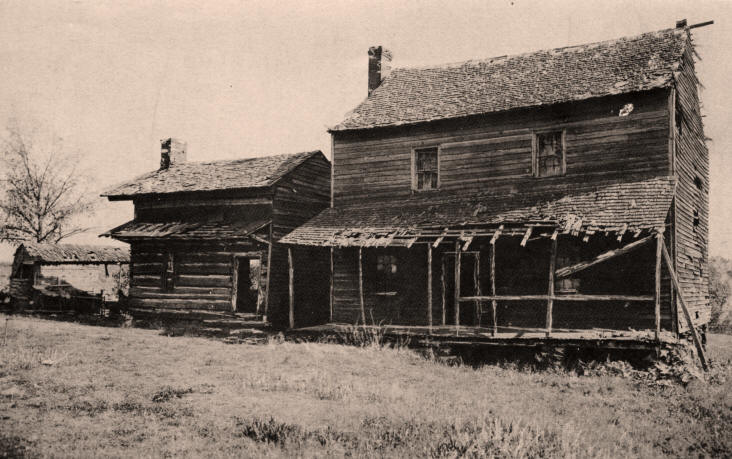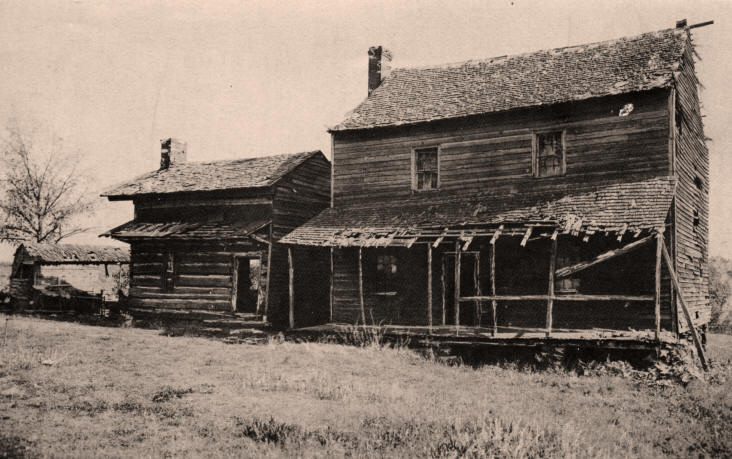Barringer

BARRINGER
BERINGER
GENEALOGY
LINE
The
BARRINGER
BERINGER
Family
Tree
Catherine
Bushart
Barringer
(1763 - 1810)
Matthais
Barringer
(1727 - 1776)
Wilhelm
Behringer
(1692 - 1743)
________
LINKS
History of
NC Counties
CARS
Catawba
Station
Township
Catawba
Elementary
& High School
Cemeteries
The
CIVIL
WAR
Additional
Family
SURNAMES
Genealogy
HUMOR
PHOTO
LINKS
Slavery
Twins
WHERE
TO
FIND 'EM
PAGE
________
FAMILY
NAMES
LOFTIN:
Beatty
Corzine
Cranford
Fisher
Givens
Harwell
Kaiser
Lanier
Lomax
McCorkle
Rudisill
Sherrill
Upright
Washington
Work
SETZER:
Aderholdt
Barringer
Bovey
Bushart
Deal
Heavner
Herman
Ikert
Miller
Motz
Rankin
Witherspoon
GOBLE:
Babst/Bobst
Douglas
Faber
Fink
Fulbright
Hefner
Meinhert
Miller
Muller
Pabst/Bobst
Robinson
JOHNSON:
Corzine
Fink
Hamilton
Kaiser
Leslie
Lewis
Moore
Sherrill
Upright
Wilkinson
Matthias Barringer
Born: 30 Oct 1727, Germany
Died: 1776, John's River, in Quaker Meadows near Morganton, Burke County, NC


Matthias Barringer was born 30 Oct 1727 to Wilhelm Barringer/Behringer and Mary Paulina Dekker in Germany. Matthias' brother, John Paul Barringer, was the first to make the voyage to the "New World" in 1743. He came to Pennsylvania, but soon relocated to North Carolina
"Mathias Barringer, Pioneer"
Newspaper Article by Dr. J. E. Hodges
By 1748, John Paul sent to Germany for his parents and brother, Matthias and Henry, and sisters, Anna Maria, Catherine and Dolly. The parents both died on the voyage, and Matthias being the eldest, the core of the family devolved on him. John Paul is said to have sent a four-horse wagon to Philadelphia for them and brought them to his home. They had landed in Philadelphia on 16 Sep 1748 and came directly south and lived for a time with brother Paul in Cabarrus County, North Carolina.
Matthias married Margaret Bushart. Margaret was born 15 Aug 1742 and died 05 Oct 1839, the daughter of John Bushart. Matthias was 15 years older than Margaret. Matthias explored the region west of the Catawba River. It will perhaps never be known the exact year that Matthias brought his wife, the former Miss Margaret Bushart, with two slaves (man & wife), into this territory but the surveyors plat and survey of his entry of the land was made in 1762, and states the body of 640 acres of land "included his improvement" - so he may have been living on the land for two or three years. His grant was issued 21 Apr 1764, almost two years after the survey was made.
Matthias Barringer soon became a prominent citizen of the community. His brother Paul had been a soldier in Germany, and when the settlers in East Mecklenburg had grown into a sufficient number to organize a militia company, Paul was made Captain and Matthias became Lieutenant of the company.
When a militia company was organized in Matthias' new community, he was elected Captain of it. He was an active member of the Community of Safety of Rowan County, when the results of British oppression made such a committee necessary.
The Catawbans, Vol 1 "Building the Birthplace of the County" p. 132
The first task after arriving was to provide shelter. Matthias and the Negro man went to work cutting down trees for the cabin of two rooms, built of logs squared in the woods, the cracks between them being filled with clay. The chimney was built of stones brought from a rocky hillside. For the roof they cut down pine trees, sawed them into blocks, and split the blocks into boards that were as good or better than shingles. For a floor they hewed poles or split small logs and laid them close on the level ground inside the cabin.
This was their home until the big house was finished. The big house was built, like the cabin, of logs cut and hewn in the woods. Each log was marked and numbered so they could tell where it should go. When all the logs and rafters were ready, Matthias sent word for miles around to the settlers who came early one morning with their wives and children. The women stayed around the cabin helping cook the good things provided, when the men took off their coats and helped Matthias put the logs to their places. This was called a "raising".
This was only the frame of the house. Matthias had hired some sawyers to make some planks for him. The planks were stacked up on sticks until thy were dry. In the meantime, Matthias and his Negro had put boards on the roof. Then they set to work - to ceil and floor the house. They put planks on the outside and when they had finished, the logs could not be seen.
The chimney, which was built of stone and pipe clay mortar, was larger than anything you have ever seen, the fireplace being ten feet wide. Even when the fire died out, the huge fireplace continued to throw out heat.
The 1759 Kitchen, at left, was one of the first building west of the Catawba River.
There followed in due time other buildings such as barns, granaries, and most important of all - the kitchen. The German settlers always built this a short distance away from the main dwelling. This also had a very wide fireplace where hooks for pots hung from cross bars of iron. The rafters were left bare as well as the joists so they could have convenient places to hang pepper, sage and lots of other things for winter use. There was also the smokehouse.
Matthias did not build his chicken house - he planted it. It was a row of ceder trees between the house and the barn. The trees made a good roosting place.
The Catawbans, Vol 1
p. 109
St. James Lutheran Church in Conover is located not far from the Matthias Barringer farm. When the American Revolutionary War broke out, the people of Catawba County had strong feelings. Some were loyal to Great Britain and the throne. Others felt like America had a right to be an independent nation.
The desire for freedom and resistance to colonial oppression was strong. A meeting was called in New Bern in August of 1774 in defiance of the governor. It was decided that counties elect or appoint committees of safety to take charge of public affairs. Until a constitution could be adopted, these committees were vested with all the power of government. Matthias Barringer, Francis McCorkle, Christopher Beekman and Peter Ikerd served on the committee in the Catawba area (then Rowan County).
Any estimate as to the total number of men who served as soldiers at any time during the seven years of the war would be a guess. But, of the nine companies of militia in Rowan County in 1775, two may reasonably be assumed to have been composed of Catawba men - having Catawba leaders. Captain Francis McCorkle's outfit is believed to have contained about 64 men, and Captain Matthias Barringer's, approximately 88 men.
In July of 1776, Matthias Barringer and seven militiamen went on a scouting expedition in the Quaker Meadows area. They were spotted by a Cherokee war party, who proceeded to massacre them. This attack would cause a severe retaliation against the Indians. From the Carolinas to Virginia, 4000 militia came to destroy the Cherokee villages. Even some of the Loyalists joined up with the militia.
The Catawbans, Vol 1
p. 39
An Indian ambush trapped them. Barringer was killed in the first round of fire. Only Philip Frye escaped when he hid behind a log under 2 feet of dead leaves. Frye said later that he did not move as the Indians scalped Barringer and the others, even when one brave stood on the log and looked right at the spot where he had hidden.
Tradition relates that Captain Barringer's wife, who was at home with her children, Matthias and Catherine, told her friends on the day of the battle that she knew her husband was either dead or badly wounded, because she had heard him groan. They were massacred at John's River, in the Quaker Meadows area near Morganton, in Burke County, North Carolina. They were participants of General Rutherford's forced march against the Cherokee Indians. Only Philip Fry escaped the massacre.
"Mathias Barringer, Pioneer"
Newspaper Article by Dr. J. E. Hodges
Matthias' on son, Matthias Jr., was about 9 years old at the time of his father's death. He soon took up his father's mantle and became a worthwhile citizen.
The people of Catawba County erected a granite monument to the massacre victims on July 2 1897 at the Courthouse in Newton, North Carolina.
Matthias Barringer & Other Massacre Victims Memorial Monument in Newton

The monument reads...
A tribute to
Matthias Barringer,
Lipsidom Adam,
Grunot - Hass - Wilson
and another, who were
massacred on John's River in
Gen. Rutherford's
forced march against the
Cherokee in 1776 and to
Philip Fry
who is one escaped and to
Conrad Tippong,
One of Lafayette's men,
by a grateful posterity.
July 2, 1897The Catawbans, Vol 1
p. 132
The place where Catawba County was organized in 1843 has long been the source of legend and tradition. The long house buildt by Matthias Barringer in 1762 was centrally located from the start. Most years the site served as a militia muster ground for the Upper Regiment of Lincoln County
The annual muster was during the last weekend of May, corresponding to the later Memorial Day holiday. Estimates by old-time Catawbians suggest that 5,000 people gathered on the plantation. Matthew L. McCorkle, Catawba's most famed orator of the 1800s, claimed that "the Olympian games at Athens or Isthian games at Corinth could not have been of more interest to the people than this great gathering at Barringer's." Frolicking with games and sport and much eating and drinking would follow drilling. Susannah Haas Barringer cooked the entire weekend, selling meals to all comers for a quarter.
Barringer was the first in Catawba County to die for the cause of Liberty.
The Barringer house became the site of the first Court of Catawba County in 1843. The house would later be moved to Newton and become the first Catawba County Library.
Children of Matthias Barringer and Margaret Bushart
Name Birth Date Death Date Spouse Catherine Bushart Barringer 06 Aug 1763 08 Feb 1810 John Setzer I Matthias Barringer 22 Sep 1767 Catherine Haas After Matthias Barringer's death, his widow (Margaret Bushart Barringer) married Conrad Tippond. If you have additional photos or information on the Barrigner / Beringer Family, please contact me.


